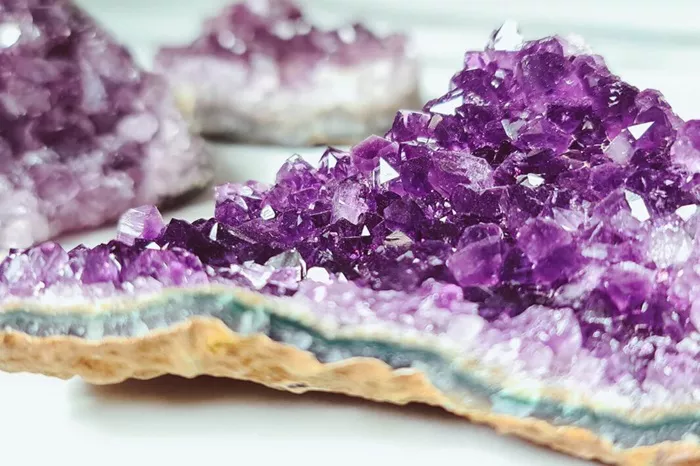Amethyst is a captivating gemstone, celebrated not only for its vibrant purple hues but also for its association with various healing properties. While these attributes are rooted in traditional beliefs and folklore, it is essential to note that there is no scientific evidence supporting amethyst’s healing powers. This article explores these cultural beliefs while maintaining a balanced and respectful perspective.
Traditional Beliefs About Amethyst’s Healing Powers
Throughout history, amethyst has been revered for its supposed ability to promote physical, emotional, and spiritual well-being. Some of the most common beliefs include:
Stress and Anxiety Relief
Amethyst is often associated with promoting relaxation and tranquility. It is believed to help reduce stress and alleviate feelings of anxiety by calming the mind and soothing negative emotions.
Improved Sleep
Many cultures regard amethyst as a “sleep stone,” thought to aid in improving sleep quality and combating insomnia. Placing the gemstone near a bed is said to create a peaceful environment conducive to rest.
Pain Relief
Amethyst has been linked to pain relief, particularly for headaches and migraines. Some believe the gemstone emits soothing energy that alleviates physical discomfort.
Spiritual Healing
Amethyst has long been connected to spiritual growth and intuition. It is thought to enhance meditation, open the third eye, and strengthen the connection to the divine or higher self.
Emotional Balance
The gemstone is believed to promote emotional stability by reducing anger, irritability, and grief. Its calming energy is said to help individuals achieve a more balanced state of mind.
Other Purported Benefits
Enhancing Creativity: Encourages innovative thinking and imagination.
Improving Mental Clarity: Believed to clear the mind and improve focus.
Strengthening the Immune System: Associated with boosting overall vitality.
Boosting Metabolism: Linked to better energy flow in the body.
Methods of Use
Traditionally, people use amethyst in various ways to access its supposed healing properties:
Wearing Amethyst Jewelry
Amethyst necklaces, rings, and bracelets are believed to allow the gemstone’s energy to interact with the body, facilitating its calming and balancing effects.
Meditation with Amethyst
Holding an amethyst stone during meditation is thought to deepen relaxation, enhance focus, and strengthen spiritual connections.
Placing Amethyst in the Home
Many place amethyst crystals in their homes to create a serene and positive atmosphere. Common locations include bedrooms (for better sleep) and living rooms (to promote harmony).
Amethyst Water
Some traditions involve infusing water with amethyst by placing the stone in water. While this practice is popular in crystal healing, there is no scientific evidence to support any tangible effects.
Cultural and Historical Context
Amethyst’s associations with healing and protection can be traced back to several cultures:
Ancient Greece: Amethyst was thought to protect against intoxication and promote clarity. The word “amethyst” derives from the Greek “amethystos,” meaning “not intoxicated.”
Medieval Europe: The gemstone was used in amulets and believed to provide protection and calm during stressful times.
Modern Spiritual Practices: Amethyst is commonly used in contemporary crystal healing and meditation for its perceived calming and spiritual properties.
A Balanced Perspective
While the traditional beliefs about amethyst are fascinating and culturally significant, it is crucial to separate folklore from scientific fact. To date, no clinical studies validate amethyst’s healing properties. However, many find comfort and inspiration in using amethyst as part of their wellness or mindfulness practices.
Amethyst remains a symbol of serenity, creativity, and balance in the minds of many. Whether you are drawn to its stunning appearance or intrigued by its rich history, it is a gemstone that continues to captivate across cultures and time.
Related topics

